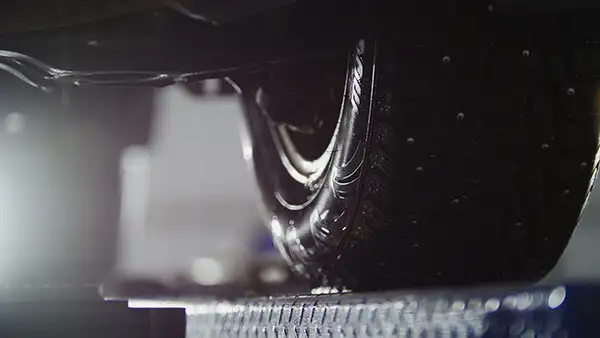
While most drivers take tires for granted, they are a frequently neglected workhorse responsible for handling and safety of the car, working in tandem with the brakes. And to stay safe, one of the most important things to take care of is ensuring you fit the proper tires for the weather conditions in your area. But how different are these tires, and what tire type should you choose? At Finsanto Automotive, we are San Antonio’s Expert Shop for Tire Repair.
Summer tire
This type of tire is optimized for hot asphalt and high ambient temperatures. Generally, rubber performs best in weather conditions commonly seen during the summer, which is why performance tires usually fall into this category.
Since they don’t have to deal with snow or mud, they usually don’t have any sipes (small grooves) and have a streamlined pattern usually consisting of a few longitudinal grooves designed for wet grip. Most of the tire is in contact with the road, delivering excellent grip and handling.
Summer tires are made from a tougher rubber compound to better withstand the thermal challenges posed by the road and rolling resistance itself. A nice side-effect is that wear is also much better than with winter tires, as is fuel economy due to a lower rolling resistance.
However, their ability to deal with heat comes at a cost: as the temperatures drop, the tires stiffen so bad that they don’t really stick to the road much, resulting in increased braking time and laughable resistance to skidding.
If the temperature around you rarely drops below 50, get a nice pair of summer tires in a size that’s right for your car (avoid no-name brands), and you’re all set for the next 20 thousand miles.
Others may not be so lucky, and that’s why manufacturers had to come up with a solution to make driving in cold weather safer and bearable.
Winter tire
Winter tires are designed specifically for colder weather. They have a much softer compound that works even in very cold weather. The tire pattern is altered to adequately displace snow and slush. That’s why these tires have more irregular grooves and generally sport a much deeper thread to be effective.
You should always use winter tires when it’s snowing outside. Summer tires are not effective and take more than double the distance of winter tires to stop the car. The gap is smaller when it’s dry and cold, but winter tires still usually perform a bit better.
Even though some use winter tires year-round (it’s usually legal), note that winter tires perform poorly in hot weather, as the soft rubber sticks to the road surface. This makes handling very mushy and imprecise, especially during braking. And if you find yourself in the middle of a downpour – take care: at temperatures above 40, winter tires are worse in the wet than the summer tires, and markedly so!
All-season tire
The jack-of-all-trades, all-season tires aim to deliver the best of both worlds: good, dry traction in hot weather, and at least some ability to handle a bit of snow and ice. Most do a fairly good job. They perform a bit worse than winter tires and can’t really match the best of summer tires, but if you’re a patient driver that doesn’t thrash the car, you’d be hard-pressed to notice a difference.
As late as a decade ago, these tires used to be made primarily from a winter compound that had been hardened for better summer performance. Nowadays, with the developments in material sciences, manufacturers have been able to create solid all-rounders that even outperform dedicated season tires, one such example being the Michelin Crossclimate. However, they still lack the ability to handle more serious amounts of snow.
Overall, all-season tires are good if you experience milder winters with occasional snowfall and cover a low mileage.
A few caveats
Never mix and match two tire types. If you use winter tires solely on your driven wheels, you’ll find it easier to accelerate, which can deceive you into thinking you have plenty of grip. But when the other axle loses traction, it may be too late to react and stop the car!
It’s also important to recognize that buying two sets of tires actually doesn’t mean you’re spending twice as much – your tires will last twice as long since you’ll be using them for half a year each. And, you’ll get better performance as they’ll be used in optimal conditions for the compound they use.
At Finsanto Automotive we offer Wheel Alignment and Wheel Balancing. For all your tire repairs in San Antonio, contact us today! Our phone number is 844-935-0155